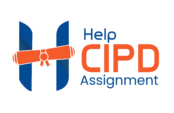Case Study
Your manager has just returned from the monthly Senior Management meeting where all departmental heads were asked to present a report showcasing their contribution to business performance. Given your experience in evidence-based practice and data analytics, she has requested that you produce a report for Senior Management. This report should explain what evidence-based practice is and its relevance to people professionals. Additionally, it should include practical examples of the types of data analysis that people practitioners use to gain insights into people practices.
To prepare for this, you need to complete a report consisting of two sections.
Task 1
For section one, you are to produce a report that gives the Senior Management team a clear understanding of what evidence-based practice is. This report should also describe the approaches for effective critical thinking and decision-making that ensure integrity and value are maintained.
Assessment Questions
AC 1.1 Evaluate the concept of evidence-based practice including how it can be applied to decision-making in people practice.
Example:
Evidence-based practice (EBP) is a methodology that emphasises using research, statistics, and analysis to guide and verify business procedures. The goal is to integrate professional experience and stakeholder values with the best available evidence, creating a systematic approach to decision-making. This strategy aims to increase the probability of favourable outcomes and reduce the possibility of unfavourable ones by relying on empirical evidence. EBP ensures that HR and talent management decisions are based on solid evidence and established best practices within the context of people professionals. It fosters a culture of continuous learning and improvement, encouraging professionals to update their practices in line with the latest research. However, implementing study findings in specific and complex situations can be challenging, requiring practitioners to adapt evidence to fit particular contexts.
AC 1.2 Evaluate a range of analysis tools and methods including how they can be applied to diagnose organisational issues, challenges and opportunities.
Example:
Interviews:
Interviews are a qualitative research method where an interviewer engages in structured or semi-structured interactions with one or more participants (Magaldi and Berler, 2020). This approach allows for the exploration of complex issues, clarification of responses, and a deeper understanding of individuals’ thoughts and feelings. In an organisational context, interviews are often used to gain a thorough understanding of employees’ perspectives and experiences (Kabeyi, 2019). They are crucial for collecting qualitative data that complements quantitative analysis, providing a holistic view for informed decision-making in various organisational settings.
AC 1.3 Explain the principles of critical thinking including how you apply these to your own and others’ ideas.
Example:
Precision:
The principle of precision requires critical thinkers to meticulously verify information, ensuring that claims are solidly grounded in reliable evidence (Hitchcock, 2018). By adhering to this principle, individuals contribute to more robust and informed discussions, where ideas are based on verifiable facts rather than speculation (Critical thinking | CIPD). This commitment to fact-checking and providing reliable sources enhances the credibility of arguments and fosters trust among participants.
AC 1.4 Explain a range of (2) decision-making processes
Example:
Collaborative Decision-Making Process:
Collaborative decision-making emphasises the involvement of multiple stakeholders in the decision-making process. It begins by identifying individuals who have a significant personal stake in the decision (Abubakar et al., 2019). This group of decision-makers engages in sharing and discussing information, facilitating the exchange of diverse perspectives and ideas. The goal is to reach a consensus or agreement that effectively addresses the needs and concerns of all parties involved (CIPD | Evidence-based practice for effective decision-making). Once a decision is made, it is communicated, implemented, and monitored to ensure its success. This process fosters inclusivity, encourages diverse viewpoints, and cultivates shared responsibility for the decision, ultimately leading to successful outcomes that are strongly supported by all stakeholders (Rousseau, 2018).
AC 1.5: Assess how (2) different ethical perspectives can influence decision-making
Example:
Utilitarianism, advocated by thinkers like Jeremy Bentham and John Stuart Mill, focuses on maximising collective well-being and pleasure (Mill, 2016). This ethical framework judges actions based on their outcomes, encouraging individuals to weigh the pros and cons before acting (Hennig and Hütter, 2020). Those who adopt a utilitarian perspective aim to maximise overall well-being for the greatest number of people, considering the potential outcomes and consequences of their decisions. By systematically evaluating actions based on their overall impact, utilitarianism guides individuals toward choices that enhance societal welfare (Barrow, 2015).
AC 3.1 Appraise (2) different ways organisations measure financial and non-financial performance
Example:
Financial Key Performance Indicators (KPIs) are specific and measurable metrics used to evaluate an organisation’s financial performance in alignment with its strategic objectives (Badawy et al., 2016). They provide a clear assessment of critical areas vital to the organisation’s success. One example is ROI, or return on investment, a widely-used financial KPI that quantifies the return generated by an investment relative to its cost (Hristov and Chirico, 2019). This calculation involves dividing the net profit from the investment by its initial cost. A high ROI indicates a favourable investment outcome, while a low ROI suggests less effective investment utilisation. This KPI offers a precise and measurable assessment of financial efficiency and effectiveness, assisting organisations in making strategic resource allocation decisions (Perl and Memmert, 2018).
AC 3.2 Explain how to measure the impact and value of people practice using a variety of methods
Example:
People management plays a vital role in augmenting the value of an organisation through several avenues:
- Boosting Employee Engagement and Retention: Implementing strategies that prioritise employee well-being, recognition, and career growth fosters a positive work environment (Bratton et al., 2021). Engaged employees are more likely to show dedication to their roles and less likely to actively seek other employment opportunities, thereby reducing turnover costs and retaining institutional knowledge.
Task 2
For section two, you are to provide a quantitative and qualitative analysis review using the two sets of data provided.
First, review the Equality, Diversity, Inclusion, and Salary data presented in Table 1 and analyse it to show the:
- a) Percentage of each gender by type
b) Ethnicity as a percentage per team
c) Disability percentage as an organisation as a whole and by teams
d) Salary differences across genders
e) Overall average salary paid by the organisation
Present your findings using appropriate diagrammatic forms and make justifiable recommendations based on your evaluations.
Assessment Questions
AC 2.1 With reference to a people practice issue, interpret analytical data using appropriate analysis tools and methods

- AC 2.2 Present key findings for stakeholders from people practice activities and initiatives.
- AC 2.3 Make justified recommendations based on evaluation of the benefits, risks, and financial implications of potential solutions.
Related:



